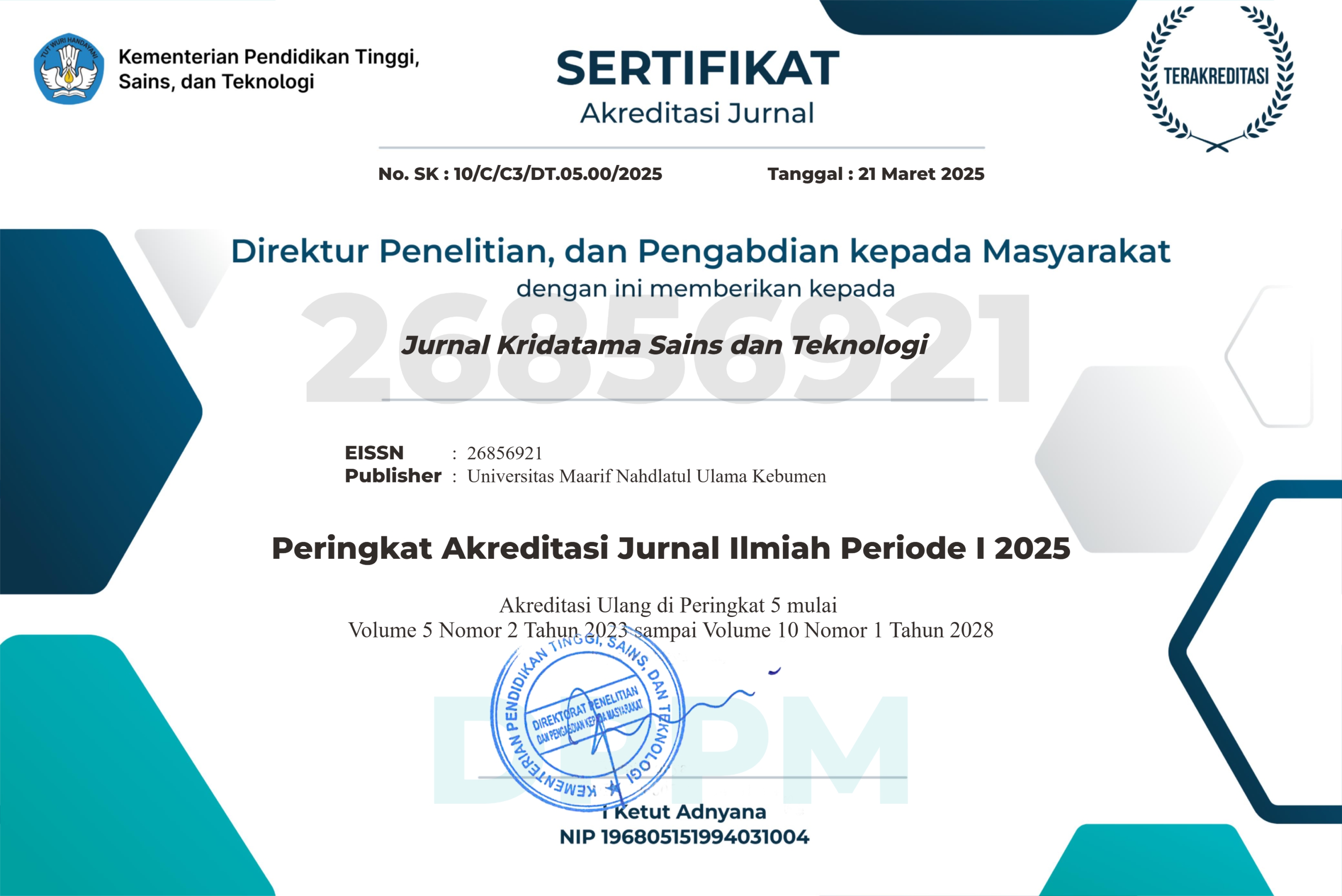Kajian Biaya Replanting Karet (Havea brasiliensis) Kebun Masyarakat Menggunakan Mesin Pertanian (Chainsaw) Di Kabupaten Padang Lawas
DOI:
https://doi.org/10.53863/kst.v6i02.1432Keywords:
Replanting Cost, Community Rubber Plantation, Rubber Wood, Agricultural MachineryAbstract
Rubber Replanting is the cutting down or cutting of unproductive rubber trees, renewing old plants and replacing the plants with more productive plants. In general, rubber plant rejuvenation is carried out when the plant reaches the age of 25-30 years. However, in this study, rejuvenation was carried out on 14-year-old rubber plants. This research was conducted to determine the cost of cutting down rubber trees independently in an area of 1 Ha, and utilizing tree waste into useful firewood. This research was conducted from September 30 to October 12, 2024 with a research area of 1 hectare. The cost of replanting using heavy equipment generally costs 10 - 15 million in 1 Ha. This information was obtained from direct interviews with business actors who provide heavy equipment rental services in the form of excavators in the Padang Lawas area. Based on the economic ability of rubber plantation farmers, using Chainsaw machine tools is estimated to be more economical than using heavy equipment such as excavators. How to replant rubber by cutting rubber trees one by one and chopping trees into firewood. Analysis using Descriptive analysis and secondary data. The results showed that replanting using chainsaw is more economical than using heavy equipment (Excavators) and rubber trees that are uprooted can be of economic value and this research can be a reference for farmers who want to do replanting
References
Rusono, N., Sunari, A., Candradijaya, A., Martino, I., & Tejaningsih. (2013). Analisis Nilai Tukar Petani (NTP) Sebagai Bahan Penyusunan RPJMN Tahun 2015-2019. Jakarta: Kementerian Perencanaan Pembangunan Nasional
Ghozali, DI., Sari, DR., Ruslim Y. (2021). Panduan Praktikum Mesin – Mesin Kehutanan. Fakultas Kehutaan Universitas Mulawarman Samarinda.
Sugiyono. 2019. Metode Penelitian Kuantitatif, Kualitatif dan R&D. Bandung: Alfabeta.
Martono, DS. (2013). Prestasi Kerja Penebangan dan Pembagian Batang dengan Chainsaw di Hutan Pinus (Kasus Di RPH Ngrayun, BKPH Ponorogo Selatan, KPH Lawu Ds Perum Perhutani Unit II Jawa Timur). JURNAL AGRI-TEK: Jurnal Penelitian Ilmu-Ilmu Eksakta, 14(2), 55–64.
Haryanto, (1995). Pemanenan Hasil Hutan, Buku I Perencanaan. Bagian Penerbitan Yayasan Pembina Fakultas Kehutanan Univeritas Gadjah Mada, Yogyakarta.
Zain, J. (1991). Analisa Permintaan Rumah Tangga akan energi Pedesaan (Studi Khasus di DAS Konto, Malang, Jawa Timur). Disertasi, FPPS, UGM
Woelan, S., Sayurandi, S., & Pasaribu, S. A. (2012). Potensi kayu karet hasil peremajaan di tingkat perusahaan perkebunan. Warta Perkaretan, 31(2), 75-85.
Vachlepi, A. (2019). Prospek Pemanfaatan Kayu Karet Sebagai Bahan Baku pembuatan Pulp. Jurnal. Palembang: Warta Perkaretan.
https://www.bioindustries.co.id/cara-pengawetan-kayu-karet-7469.html.
Surya, A. (2013). Faktor-Faktor yang Mempengaruhi Pembangunan Sektor Pertanian dan Implikasinya terhadap Kesejahteraan Petani di Provinsi Lampung. Jurnal Ekonomi, 15(1), 87-140.
Boerhendhy, I., Nancy, C., & Gunawan, A. (2003). Prospek dan potensi pemanfaatan kayu karet sebagai substitusi kayu alam. Jurnal Ilmu dan Teknologi Kayu Tropis, 1(1), 35-46.
Downloads
Published
How to Cite
Issue
Section
License
Copyright (c) 2024 Surtan Hasibuan, Marino Manik, Anita Rizky Lubis, Sary Indah Yani Gea

This work is licensed under a Creative Commons Attribution-ShareAlike 4.0 International License.
Authors retain copyright and grant the journal right of first publication with the work simultaneously licensed under a Creative Commons Attribution-ShareAlike 4.0 International License that allows others to share the work with an acknowledgment of the work’s authorship and initial publication in this journal

















